What's new for winter 27/28
Explore more on Destinations
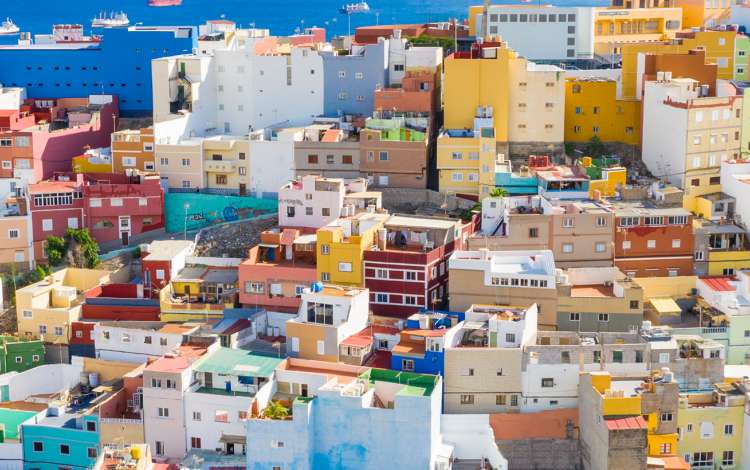
Sparkling seas, desert sands, lush forests and vibrant towns and cities – discover why this charming Canary Island will tick all your holiday boxes.
Because of its diverse landscapes, Gran Canaria, the third largest of Spain’s Canary Islands, is often called the ‘miniature continent’. Here, sandy beaches give way to deserts, volcanic terrain and lush forests. It has its own microclimate where crops such as tropical fruit, coffee and wine grapes thrive. City life adds to the cosmopolitan appeal – the capital, Las Palmas de Gran Canaria, is Spain’s ninth-largest city and offers all the urban excitement you could wish for.
The Maspalomas Dunes are a unique slice of Sahara by the sea. Over 400 hectares of golden sands create an everchanging landscape with the sparkling Atlantic Ocean as a backdrop.
The dunes are situated on Gran Canaria’s south coast, near the popular beach resort of Playa del Inglés. Though reminiscent of the Saharan sands some 150km away in North Africa, these dunes were formed of crushed shells and coral after the last Ice Age when the sea receded. The area is a protected Nature Reserve, and you can explore the landscape of sand, lagoon, blue-flag beach and palm grove on foot or by camel. You can even try sandboarding – similar to snowboarding – and glide gracefully down the dunes. Alternatively, lose yourself in nature on birdwatching trails: year round the reserve attracts species such as the Berthelot’s pipit, Eurasian hoopoe, spectacled warbler and the Canary Islands chiffchaff.
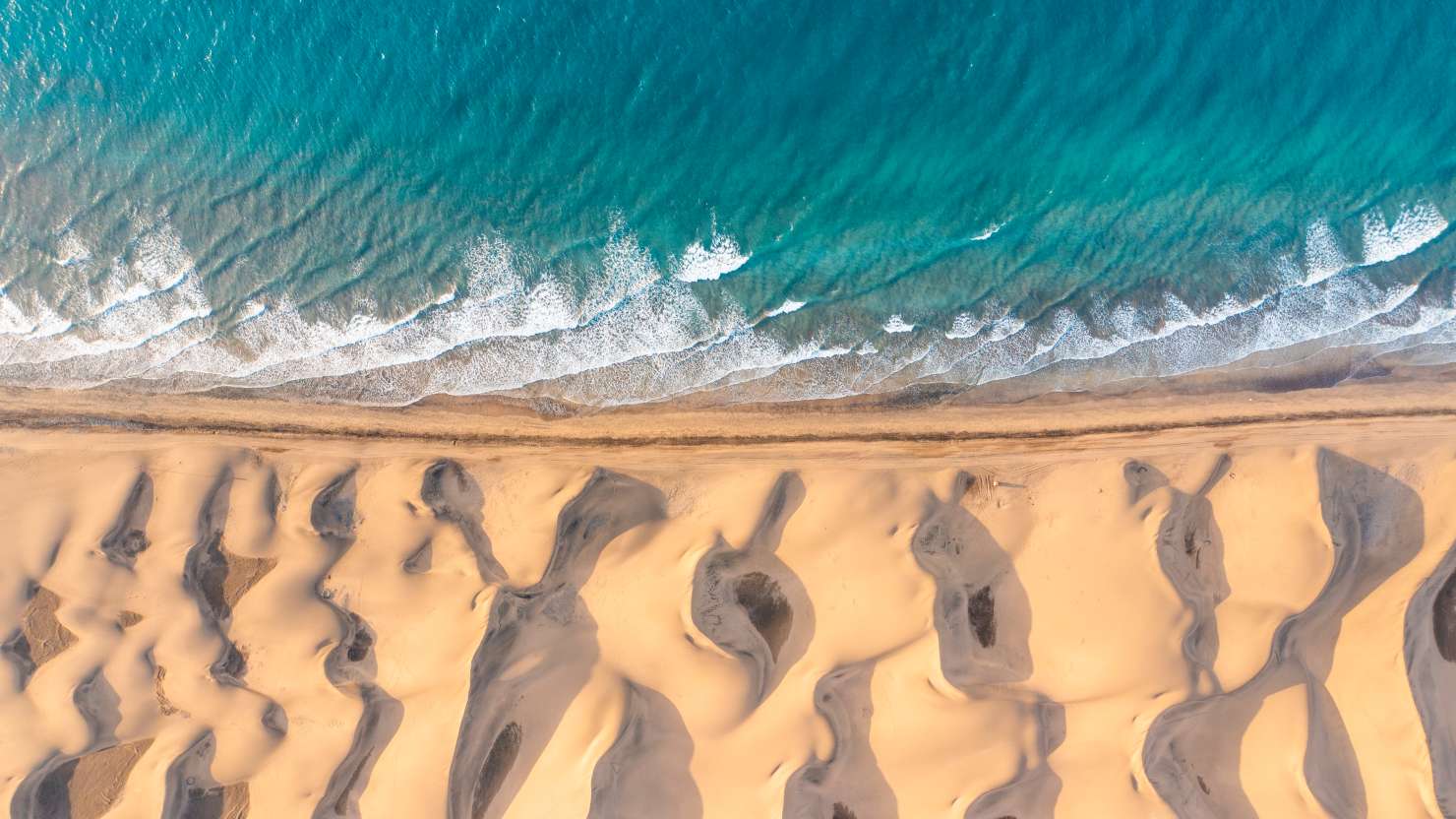
Less than 60km away, the terrain changes from desert-like to volcanic. In Gran Canaria’s northwest is the Caldera de Bandama, a volcanic depression about 200m deep and 1,000m in diameter that was formed by eruptions some 2,000 years ago.
The highest point is the Pico de Bandama. The views from here are breathtaking, taking in the caldera and beyond to Las Palmas, Santa Brígida, Telde and the Atlantic Ocean. Those up for a more challenging sightseeing expedition can hike down into the crater floor and explore viewpoints, a cave, multicoloured volcanic ash and native flora. The volcanic soil also lends itself to winemaking, and in the surrounding Tafira Alta area you’ll find some spectacular vineyards.
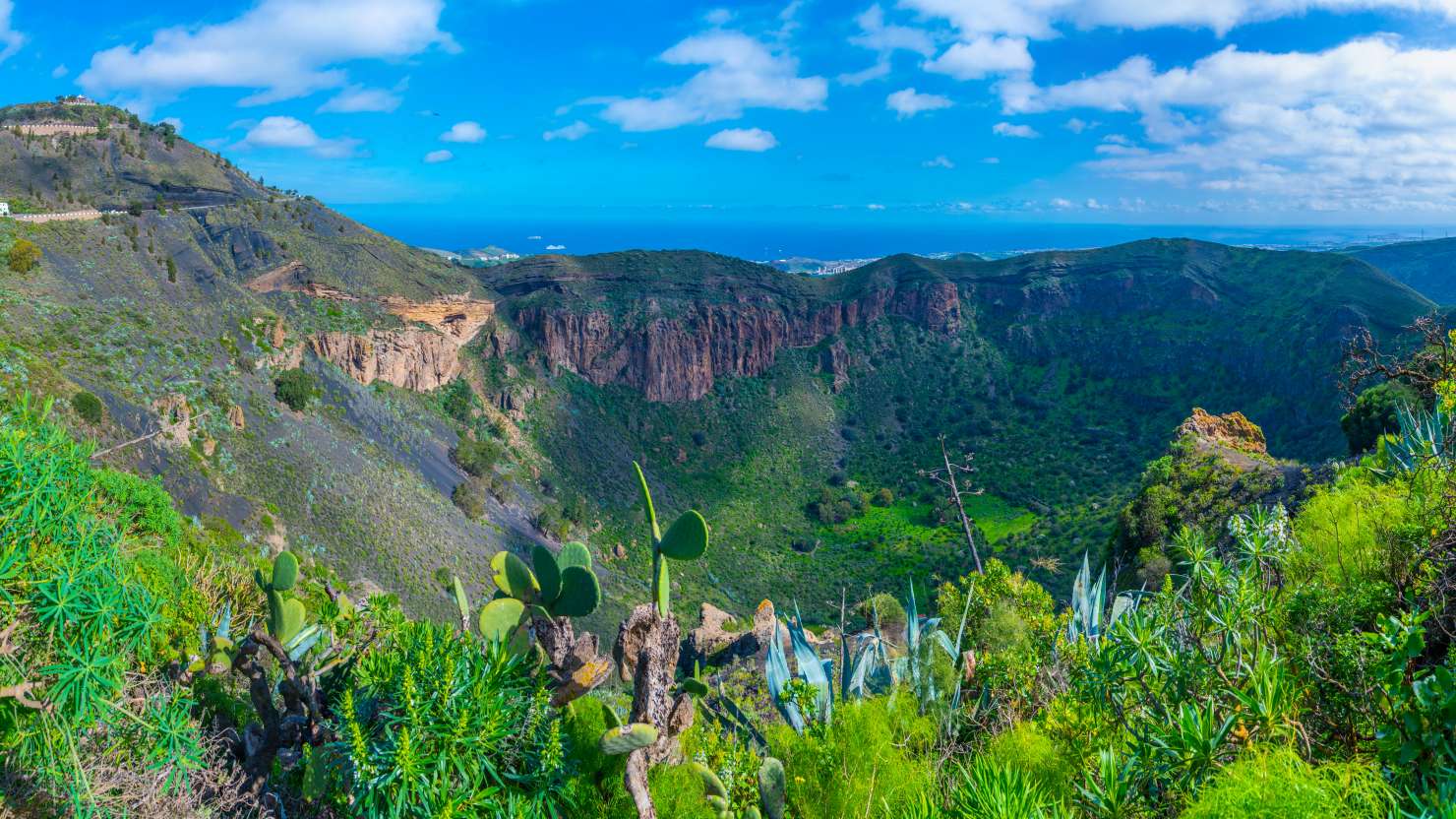
With a population of 380,000, Las Palmas is the largest city in the Canary Islands, and with that comes all the culture and vibrancy you’d expect.
Our ships dock right in the heart of Las Palmas, putting its many charms at your fingertips. Start your exploration in the historic area of Vegueta, where cobbled streets and colonial architecture make you feel like you’ve travelled back in time. You could stop in at the Columbus Museum, where Christopher Columbus stayed in 1492 while one of his ships was being repaired; Santa Ana Cathedral, with its impressive neoclassical façade and lofty interior columns that mirror the palm trees outside; or Plaza de Santa Ana, a sprawling central square where local life thrums.
Part of what makes life in Las Palmas so lovely is its proximity to Playa de Las Canteras, one of Europe’s best urban beaches. Along its three-kilometre shoreline you’ll find a pedestrian promenade lined with bars and restaurants, parasols and hammocks, and of course, golden sands and gentle waves. It’s a 15-minute stroll from the ship and a fabulous way to soak up both the sun and the vibe of the city.
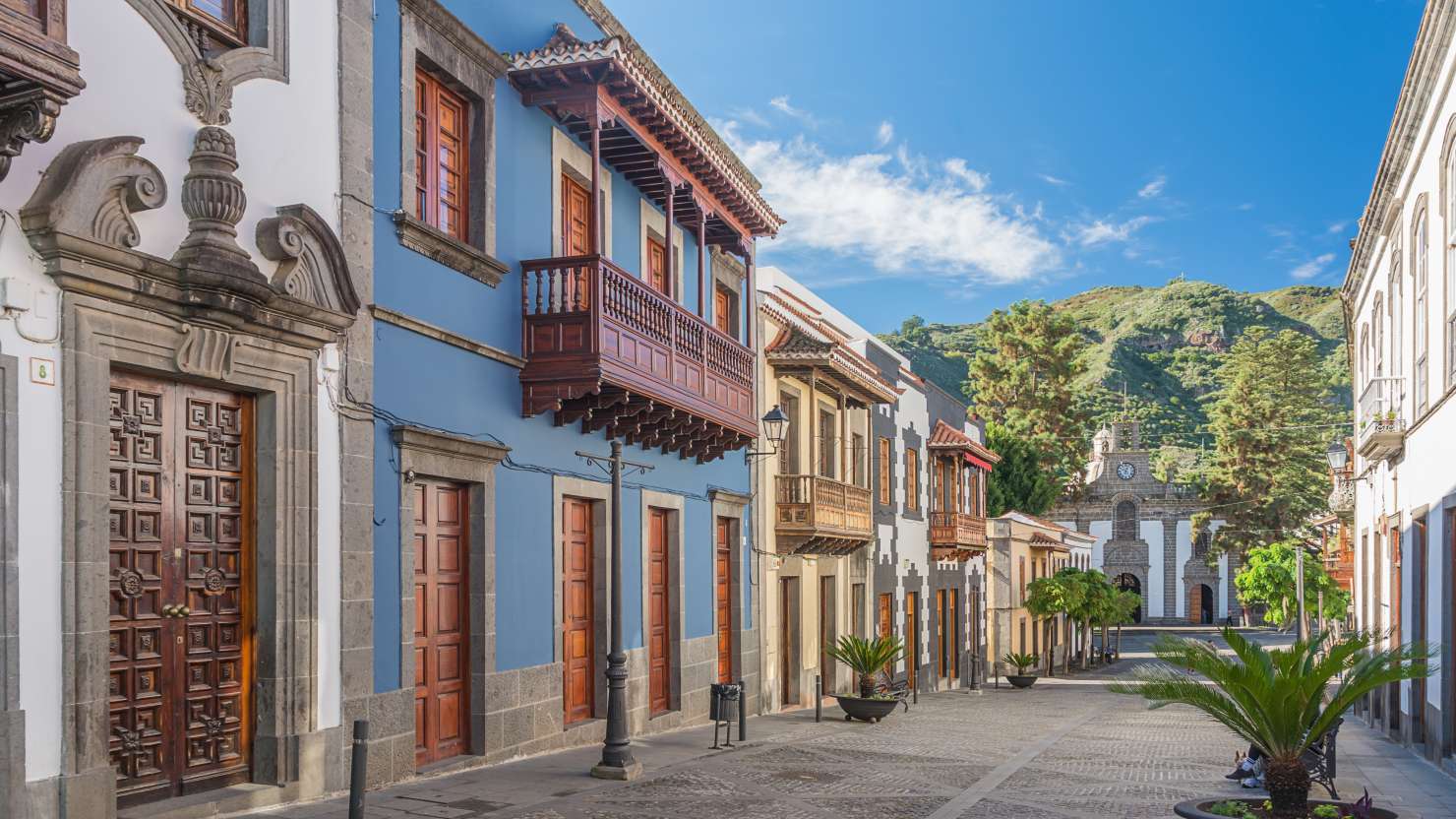
It’s often called ‘Little Venice’, and one look at Puerto de Mogán’s winding canals, picturesque bridges and low-slung buildings will show you why.
The charming resort town on the island’s south-west coast is built around a harbour and was once an isolated fishing village. In the 1980s, it was developed into a resort town and quickly became beloved by locals and tourists alike.
The old town is perfect for languid strolls through labyrinthine streets, whitewashed houses, bougainvillea-strung balconies and swaying palms. At the waterfront, there’s a vibrant marina and a sheltered beach with soft sands and calm waters – the perfect setting for a cooling dip.
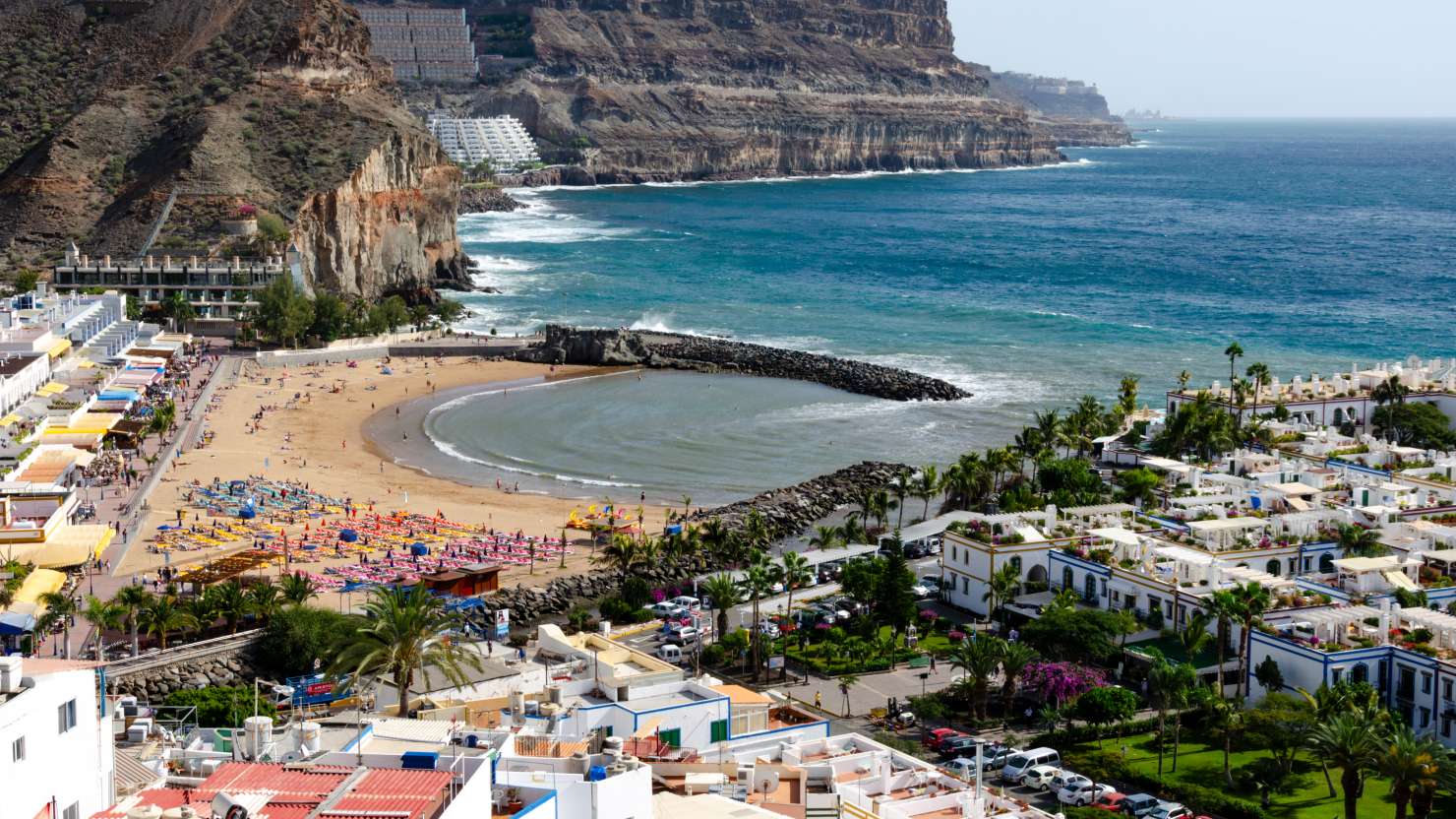
Gran Canaria’s food scene is deliciously dynamic. Dishes run the gamut from traditional to innovative, but at the heart of it all is fresh, seasonal ingredients – produce grown in the lush interiors and seafood brought in on boats each morning.
Inspired by the island’s bounty, local chefs are using creative techniques and international inspiration to take it to new heights. There are currently five Michelin-starred restaurants in Gran Canaria and they, along with dozens of highly regarded, laid-back dining spots, are putting modern Canarian cuisine on the map.
Or you could start with the classics: papas arrugadas, aka wrinkly potatoes, boiled and salted and served with a chilli garlic sauce; the popular but polarising gofio, a toasted grain you’ll find added to everything from soups to ice cream; and sweet bienmesabe, a dessert made with ground almonds and egg yolks.
Gran Canaria is the only place in Europe where coffee beans are cultivated. At Finca La Laja, a farm in the Agaete valley, they’ve been doing so for some 200 years. They also grow avocados, mangoes, guavas and oranges and produce their own wine – just in case you needed more reasons to visit.
Wine has been produced on Gran Canaria for even longer – since the 15th century. You can discover it by following the official wine route (Ruta del Vino). Look out for the local grape varieties such as Listán Negro and Tintilla at producers such as Bodegas Bentayga and Bodega San Juan.
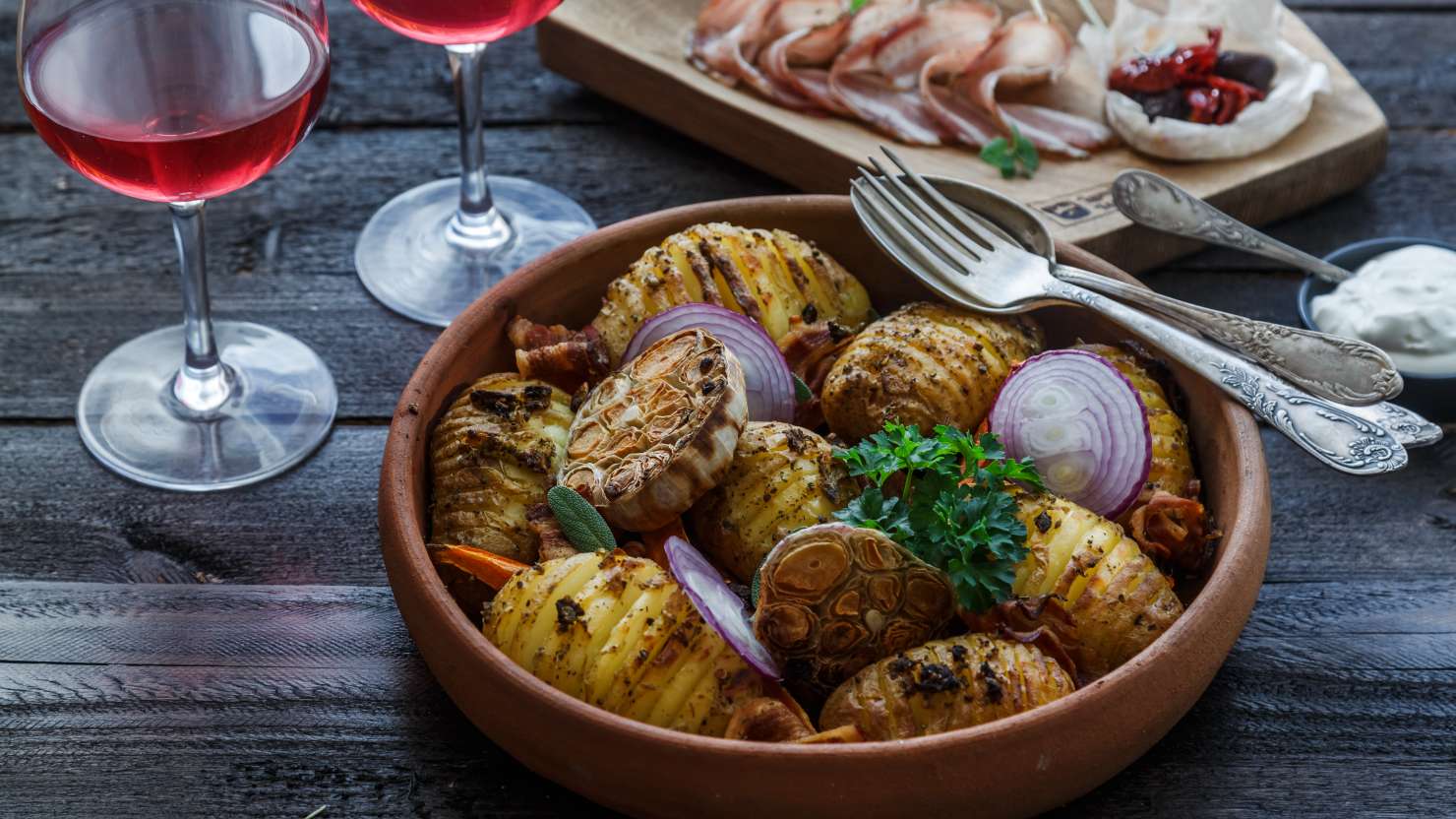
You can visit Gran Canaria – along with other delightful destinations such as Tenerife and Madeira – on a Canary Islands fly-cruise holiday. Our fly-cruises will whisk you from the UK to your waiting ship, where you can start soaking up the sun straightaway.
of
Don’t miss out! Sign up for latest news, offers and competitions from P&O Cruises.